Discover MCAT Basics (from MedSchoolCoach)
MCAT Basics (from MedSchoolCoach)

MCAT Basics (from MedSchoolCoach)
Author: MedSchoolCoach
Subscribed: 623Played: 15,409Subscribe
Share
© MedSchoolCoach
Description
Join us as we detail MCAT exam topics. Each podcast covers several MCAT sections with lessons based on review material put out by the AAMC, such as practice tests and question banks. Sam also interviews MCAT tutors and experts who share tips on how premed students can raise their score to get into medical school.
76 Episodes
Reverse
In this episode of MCAT Basics, we’ll cover Electrochemistry. We start with the role of salt bridges in electrochemical cells and cover the intricacies of cell notation. We’ll also discuss how ions maintain charge balance, the importance of reduction and oxidation potentials, and how these elements come together in galvanic and electrolytic cells. We’ll also take a closer look at concentration cells and the critical Nernst equation, which helps us understand cell potentials under non-standard conditions. Visit MedSchoolCoach.com for more help with the MCAT. Jump into the Conversation: [00:00] Introduction to MCAT Basics [01:09} Introduction to Electrochemistry [03:20] Concentration cell: same metal, different ion concentrations [13:05] Visualizing galvanic cells using royal analogy [22:19] Reduction potential, oxidation potential, cell potential explained [30:47] Electrochemical cells, Gibbs free energy, and Nernst equation [41:16] Electroplating and electric current to coat metals [45:40] Electrochemistry in Nanobiology: measuring oxidation of molecules
In this episode, we'll break down the intricate processes of nutrient digestion and absorption, from the mechanical and chemical digestion in the stomach to the vital role of the small and large intestines. We'll also discuss the regulatory mechanisms involving hormones and nervous innervation and the essential structures like the liver, gallbladder, and pancreas. And don't forget, this episode is packed with tips on everything you need to know about this high-yield topic for the MCAT. So grab your notes, get comfortable, and let's embark on this fascinating journey through the digestive system. Stay tuned for a deep dive into how our bodies turn food into the vital nutrients we need to thrive. Visit MedSchoolCoach.com for more help with the MCAT. Jump into the conversation: [00:00] Introduction to the MCAT Basics [05:11] Digestive system involves mechanical and chemical processes. [06:55] Food travels through digestive system over time. [10:48] Small intestines: duodenum, jejunum, ileum, enterocytes crucial. [14:38] Sphincters in digestive system control food movement. [16:26] Podcast discusses physiology of digestive system structures. [20:57] Salivary enzyme breaks down starch into glucose. [23:46] Muscle contractions propel food through digestive system. [27:40] Lipase enzyme breaks down fats in stomach. [29:11] Stomach doesn't absorb nutrients, protects itself. [32:55] Enzymes linked to cells for carbohydrate breakdown. [38:05] Bile emulsifies fat, chylomicrons enter lymphatic system. [41:35] Gut bacteria metabolize cellulose, form fatty acids. [45:02] Living without large intestine; regulation of digestion. [46:50] CCK stimulates pancreatic juice release, important digestion. [49:57] Prepare for MCAT and excel with us!
This podcast focuses on the eye. It begins with a brief overview of the eye's anatomy and physiology. The discussion then shifts to rods, cones, and the phototransduction pathway. The final section addresses perception. Key topics include visual field processing, differences between binocular and monocular cues, and feature detection (covering both Magno and Parvo pathways). Visit MedSchoolCoach.com for more help with the MCAT. Jump into the conversation: [00:00] MCAT Tutoring from MedSchoolCoach [00:34] Welcome to MCAT Basics [01:06] Topics covered in this episode [02:10] Anatomy & physiology of the eye [16:02] Phototransduction pathway [26:59] Perception [28:13] Visual field processing [31:34] Binocular versus monocular queues [35:02] Visual feature detection - Gestalt principles [38:18] Parallel Processing [39:12] Parvo versus Magno pathways
In this episode, we focus on the physiology of sound and hearing. We begin by exploring sound-related concepts, including sound waves, pitch, ultrasound, and the decibel system. Next, we delve into the anatomy and physiology of the ear, providing a clear understanding of how we perceive sound. This material will appear in two of the four MCAT sections: the Bio/Biochem and Physics/Chemistry sections. Visit MedSchoolCoach.com for more help with the MCAT. [00:00] Introduction [01:50] Physics of sound waves [06:07] Wavelength and frequency equation [08:08] Equation for the speed of sound [11:01] Overall takeaway for the MCAT [11:15] Ultrasound imaging [14:23] The decibel system [18:05] Anatomy and physiology of the ear
Redox reactions or reduction and oxidation are reactions in which electrons are simultaneously transferred from one chemical species to another. This episode begins with exploring this concept, including an in-depth look at oxidizing and reducing agents and the factors determining a compound's effectiveness as an oxidizing agent. It also covers the oxidation states of molecules and functional groups, common redox reagents in organic chemistry, and the role of redox in biological systems. The episode also addresses numerical concepts from general chemistry related to redox, such as determining oxidation numbers and understanding electrochemical cells. Visit MedSchoolCoach.com for more help with the MCAT. [00:00] Introduction [01:09] What is the conceptual definition of redox [06:22] What is an oxidizing agent, and what is a reducing agent? [08:50] What makes a molecule better than another at being an oxidizing agent or a reducing agent? [13:58] Which oxidation reduction reagents should you know and what do they [21:44] Redox in biological systems [35:01] How to determine the oxidation state [41:16] The application of oxidation-reduction in electrochemical cells
In this episode, we explore the topic of intelligence, which is primarily featured in the psychology and sociology section of the MCAT. We cover several key theories, including entity vs. incremental theory, general intelligence theory, two-factor theory, multiple intelligences theory, Triarchic theory, CHC theory, and biological theories. Additionally, we examine the nature vs. nurture debate on hereditary intelligence factors and discuss how intelligence is measured. Visit MedSchoolCoach.com for more help with the MCAT. Jump Into the Conversation: [00:00] Intro to Intelligence [02:47] Entity vs. Incremental Theory [06:36] G Factor Theory [10:26] Multiple Intelligences Theory [12:18] Triarchic Theory [14:39] CHC Theory [18:58] Theories of Intelligence [21:01] Hereditary factors of intelligence [28:33] How intelligence is measured [32:06] Why intelligence tests can be problematic
This episode of MCAT Basics covers the world of circuits. We will explore electrical circuits and their fundamental principles. We’ll start with dissecting the essential parameters that form the backbone of circuits: voltage, current, resistance, and power. These are the building blocks upon which all circuit dynamics are based. Next, we'll explore a variety of circuit elements, from resistors to batteries, capacitors, and switches. Each of these components plays a vital role in shaping the behavior of circuits and understanding their functionality. Finally, we'll delve into Ohm’s Law and Kirchhoff’s Law, two fundamental principles that govern circuit behavior. By grasping these laws, you'll gain essential insights into how circuits operate and how to analyze their dynamics effectively. Visit MedSchoolCoach.com for more help with the MCAT and use promo code PODCAST to receive a five percent discount on your first session. Jump into the conversation: [00:00] MCAT Tutorig from MedSchoolCoach [00:34] Welcome to MCAT Basics [01:07] Topics covered in this episode [02:14] Circuit Variables - voltage, current resistance, power [22:59] Circuit Elements - resistors, sources of voltage, capacitors, and switches [44:28] Ohm's Law [45:24] Kirchhoff's Law
This episode of MCAT Basics covers several separation and purification techniques you may see on the MCAT. We’ll cover these techniques in three distinct categories: small molecules, proteins, and cells. Within the small molecule category, we’ll discuss extraction, crystallization and recrystallization, and chromatography (TLC and HPLC). For proteins, we cover SDS-page, precipitation, soelectric focusing, and chromatography variations. Lastly, we’ll explain, within the world of cells, centrifugation, flow cytometry, and microfluidics. Visit MedSchoolCoach.com for more help with the MCAT. Jump into the conversation: [00:00] MCAT Tutorig from MedSchoolCoach [00:34] Welcome to MCAT Basics [01:07] Topics covered in this episode [02:24] Techniques for small molecules - extraction, crystallization and recrystallization, and chromatography (TLC and HPLC) [28:24] Techniques for proteins - SDS-page, precipitation, isoelectric focusing, and chromatography variations [54:47] Techniques for cells - centrifugation, flow cytometry, and microfluidics.
The immune system is split up into two main categories - the adaptive immune system and the innate immune system. This episode will cover the intricacies of the innate immune system beginning with an overview of its constituent cells. We will then explore three pivotal elements of the system: anatomical barriers, the general inflammatory response, and the complement system. This will show up in the bio/biochem section of the MCAT. For additional reading on this topic, you can refer to the NIH’s Innate Immune System paper. Visit MedSchoolCoach.com for more help with the MCAT. Jump into the conversation: [00:00] MCAT Tutoring from MedSchoolCoach [00:34] Welcome to MCAT Basics [01:06] Topics covered in this episode [02:09] The goal of the innate immune system [04:57] The cells that make up the innate immune system [11:47] Anatomical barriers to the innate immune system [19:53] General inflammatory response of the innate immune system [42:49] Complement system [45:33] MCAT Advice of the day - take as much time as you need to study for the MCAT
To continue our discussion on the immune system, in this episode, we will cover the second type of immune system – the adaptive immune system. We start with covering some vocabulary that you’ll need to know to understand the immune system, then we move into the cells that make up the adaptive immune system. Then we break down the two branches of the adaptive immune system - humoral immunity including the discussion of B cells and cell-mediated immunity highlighting T cells. Don’t miss our previous episode on the other type of immune system, the innate immune system. Visit MedSchoolCoach.com for more help with the MCAT. Jump into the conversation: [00:00] MCAT Tutoring from MedSchoolCoach [00:34] Welcome to MCAT Basics [01:06] Topics covered in this episode [02:01] Review on the difference between innate vs. adaptive immue system [02:32] General Vocabulary terms for the adaptive immune system [07:05] The cells that make up the adaptive immune system [13:09] The humoral immune system and B cells [26:07] Cell mediated immunity and T Cells [34:38] Antigen activation
Understanding the kidneys' role in the body’s balance is essential for the MCAT and beyond. In this episode, host Sam Smith discusses renal physiology, covering everything from kidney anatomy to the nephron’s critical functions in filtration, reabsorption, secretion, and excretion. You’ll explore the roles of the renal cortex and medulla, learn about the loop of Henle, and uncover the importance of ions, plasma volume, and pH regulation in kidney function. Plus, we’ll examine hormones like ADH and aldosterone and their impact on fluid balance, as well as essential measurements like glomerular filtration rate (GFR) for assessing kidney health. Visit MedSchoolCoach.com for more help with the MCAT. Jump into the conversation: (00:00) Intro to renal physiology (02:43) Kidney anatomy overview (08:38) Nephron structure and function (09:50) Six key functions of the kidney (12:03) Nephron Processes: Filtration (17:32) Nephron Processes: Reabsorption and secretion (22:51) The Loop of Henle (26:05) Understanding osmolarity in the Loop of Henle (26:55) Ion transport in the ascending limb (32:04) The role of the collecting duct (37:18) Hormonal regulation of the nephron (46:50) Key measurements of renal function (50:15) MCAT Advice of the Day
Cells and tissues form the building blocks of life, which are crucial for mastering key concepts in the MCAT’s biology and biochemistry sections. In this episode, host Sam Smith breaks down the differences between prokaryotic and eukaryotic cells, exploring animal, plant, and bacterial cell structures alongside unique cell types like erythrocytes. You’ll gain insights into the various tissue types—epithelial, muscle, connective, and nervous—along with their roles in the body. Plus, Sam highlights essential details on ribosome size, cell reproduction methods, and structural elements like vacuoles and cell walls. This episode equips you with strategies to distinguish cell and tissue types confidently, setting you up for success on exam day. Visit MedSchoolCoach.com for more help with the MCAT. Jump into the conversation: (00:00) Intro (01:03) Cell types overview (02:44) Prokaryotic vs. eukaryotic cells (09:53) Animal, plant, and Ffungi cells (16:20) Bacteria and archaea characteristics (19:09) Erythrocytes: Structure and function (20:15) Tissue types intro (23:35) Epithelial tissue types and functions (33:17) Connective and nervous tissues
Thermodynamics is fundamental to mastering chemistry concepts and understanding the energy dynamics within biological systems crucial for the MCAT. In this episode, host Sam Smith dives into the laws of thermodynamics, covering everything from the zeroth law to the third. You'll explore key concepts like enthalpy, entropy, and Gibbs Free Energy and learn how they apply to reaction spontaneity and equilibrium. Sam also gives practical examples, including how the equilibrium constant and reaction quotient (Q vs. K) affect reactions, and covers types of heat transfer—conduction, convection, and radiation—essential for the Chem/Phys section. Visit MedSchoolCoach.com for more help with the MCAT and use promo code PODCAST to receive a five percent discount on your first session. Jump into the conversation: (00:00) Intro (01:03) Introduction to thermodynamics (03:58) The four laws of thermodynamics (12:46) Thermodynamic variables: entropy, enthalpy, and Gibbs Free Energy (24:11) Phase changes in thermodynamics (25:30) Gibbs Free Energy and spontaneity of reactions (38:01) The three types of heat transfer: conduction, convection, and radiation
DNA replication and the central dogma are fundamental concepts in molecular biology, and breaking down the different replication methods and the processes of transcription and translation is crucial for understanding how genetic information is expressed and passed on in cells. In the first part of our episode, we'll break down DNA replication, exploring the concepts of conservative, semi-conservative, and dispersive replication, unraveling the mechanisms that drive this fundamental process. Later, we'll focus on transcription and translation, delving into the nuances between prokaryotic and eukaryotic organisms. We'll uncover the mechanisms by which genetic information is transcribed from DNA to RNA and then translated into proteins, all while considering the diverse cellular locations where these processes take place. Visit MedSchoolCoach.com for more help with the MCAT and use promo code PODCAST to receive a five percent discount on your first session. Jump into the conversation: [01:07] Episode Overview [01:54] DNA replication explanation [05:53] Three phases of replication - initiation, elongation, and termination [25:12] Central Dogma description [25:50] Transcription Process [36:31] The differences between eukaryotic and prokaryotic transcription [37:58] Translation Process
Understanding social and psychological theories is crucial for success on the MCAT, as these concepts shape everything from human behavior to societal structures. In this episode, Sam Smith breaks down the essential sociological and psychological theories you need to master, ranging from functionalism and conflict theory to the theories of emotion. Sam explains how these theories apply to real-world scenarios, including their relevance in medicine, healthcare disparities, and patient interactions. Visit medschoolcoach.com for more help with the MCAT. Jump into the conversation: (00:00) Intro (01:58) Overview of social and psychological theories (03:23) Functionalism (09:55) Conflict theory (12:52) Symbolic interactions (15:12) Social constructionism (18:46) Rational choice and exchange theory (23:54) Feminist theory (26:10) Behaviorism (29:34) Life course theory (33:45) Theories of emotion (41:03) Motivational theories
Electromagnetism is a critical component of physics, playing a pivotal role in everything from circuits to medical imaging technologies like MRIs. It is also a crucial topic for the MCAT, appearing frequently in the physics and chemistry sections. In this episode, Sam Smith breaks down the fundamental concepts of electricity and magnetism. Sam walks through the basics of static electricity, charge conservation, and Coulomb’s Law and explains how moving charges create currents and the forces exerted by electric and magnetic fields. Visit medschoolcoach.com for more help with the MCAT. Jump into the conversation: (00:00) Intro (01:44) How charge is defined: positive and negative (03:31) History of charge and the amber effect (05:02) Static electricity and the conservation of charge (07:26) Conductors vs. insulators (09:22) How electrostatic force is governed by Coulomb’s Law (10:52) Understanding electric fields (16:27) The relationship between electric field strength and distance (18:17) How moving charges create a current and electric potential (22:23) Different types of magnetic materials and their behavior (25:45) How magnetic fields are visualized and understood through field lines (28:32) The right-hand rule explained (33:22) How magnetic forces act on moving charges and currents (40:01) The application of electromagnetism in MRIs (44:55) MCAT Advice of the Day
A deep understanding of functional groups is crucial for excelling in the MCAT, as they play a key role in the reactivity, physical properties, and biological functions of molecules. In this episode, Sam Smith breaks down the essential functional groups, covering their physical and chemical properties, biological relevance, and common reaction mechanisms. From alcohols and carbonyl-containing groups like aldehydes and ketones, to nitrogen-containing amines and amides, Sam explains how these groups are presented in exam questions and their impact on biological systems. Visit medschoolcoach.com for more help with the MCAT. Jump into the conversation: (00:00) Intro (01:54) How the MCAT asks questions about functional groups (02:01) Physical vs. chemical properties (04:09) Alcohols: Structure and classification (06:13) MCAT questions related to the physical properties of alcohols (10:03) MCAT question examples related to boiling points (11:54) Biological reactions involving alcohols (34:23) Reactivity of carbonyl-containing functional groups
The essentials of identity theories and psychosocial development reveal the foundational elements of human behavior and self-perception. In this episode, Sam Smith discusses the core theories around identity, from Erikson’s stages of psychosocial development and Freud’s psychosexual stages to Piaget’s cognitive framework and Kohlberg’s stages of moral growth. Sam talks about how each theory is represented in MCAT questions, explaining key differences and how they impact our understanding of self-concept, self-esteem, and social roles. Whether it's Cooley’s looking-glass self or Vygotsky’s zone of proximal development, this episode helps make sense of the MCAT’s approach to personality and identity development. Visit medschoolcoach.com for more help with the MCAT. Jump into the conversation: (00:00) Intro (01:04) Psychosocial development and identity (01:42) The different theories of identity formation (01:57) Basic ideas regarding identity and self-concept (08:29) Erikson's psychosocial development theory (16:47) Testing strategies and MCAT questions (17:57) Freud's psychosexual development theory (24:01) Piaget's stages of cognitive development (28:15) Kohlberg's theory of moral development (32:42) Cooley's looking-glass self (33:21) George Herbert Mead's the I and the Me (34:34) Vygotsky's social development theory
Learning and memory are foundational concepts that play a critical role in acing the MCAT, especially in the Psych/Soc section. In this episode, host Sam Smith discusses the key concepts of learning and memory, covering the brain structures involved in memory formation, like the hippocampus and amygdala, as well as the different types of memory—explicit, implicit, and working memory. Sam also explores types of learning, including latent learning, observational learning, and the essential principles of classical and operant conditioning, and more. Visit medschoolcoach.com for more help with the MCAT. Jump into the conversation: (00:00) Intro (01:03) How brain structures support learning and memory (02:39) The role of memory in learning processes (03:20) How the information processing model explains memory (16:28) Types of learning: latent, observational, and conditioning (17:48) How observational learning works in social contexts (18:23) Overview of classical and operant conditioning (34:44) MCAT Advice of the Day
A foundational part of the MCAT, light and optics bridge the gap between physics and biology, making them vital for your exam preparation. In this episode, Sam Smith breaks down the fundamentals of light, covering both its wave and particle properties. From the energy of photons and the photoelectric effect, to wave behavior and the principles of refraction and reflection, Sam simplifies complex concepts to help you grasp key equations and principles. You'll also learn about lenses, ray tracing, and the real-life applications of polarization. Visit medschoolcoach.com for more help with the MCAT. Jump into the conversation: (00:00) Intro (01:03) Introduction to light and optics (03:10) How photons carry energy (05:34) The photoelectric effect and its significance (17:47) Introduction to waves and simple harmonic motion (18:46) Longitudinal vs. transverse waves explained (21:47) Constructive and destructive interference in wave behavior (23:40) Polarization, reflection, and refraction in light (36:40) How lenses and ray tracing work (44:59) MCAT Advice of the Day



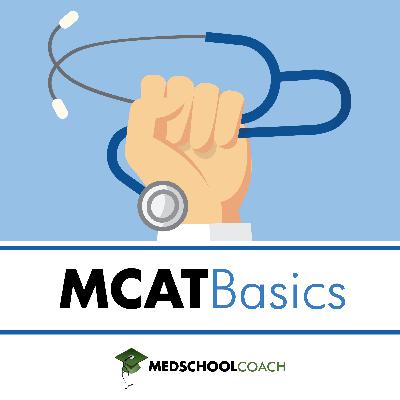


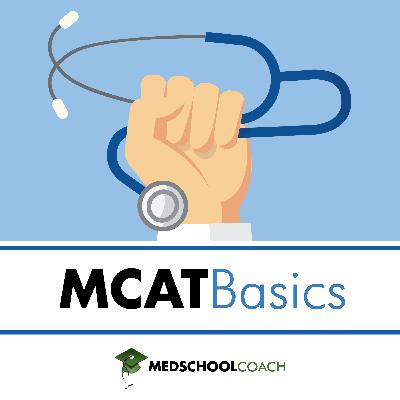
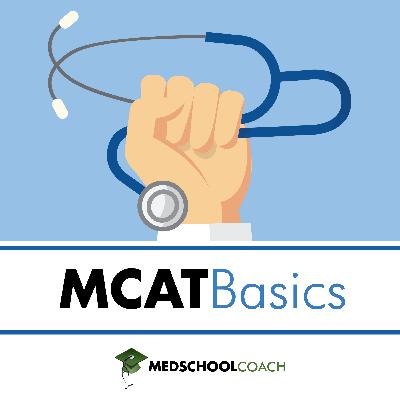
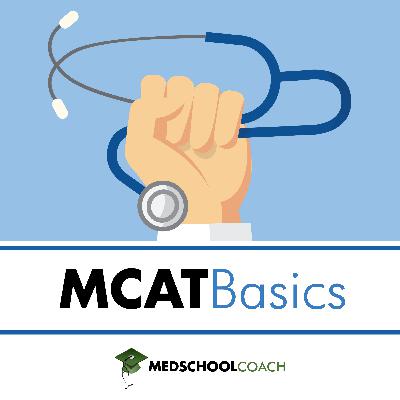
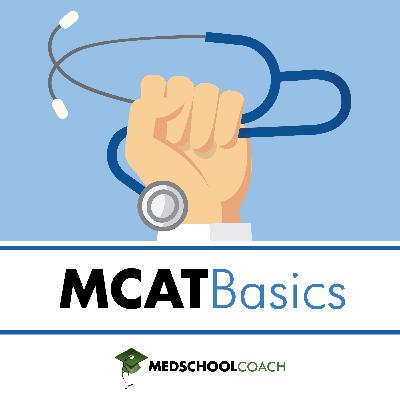
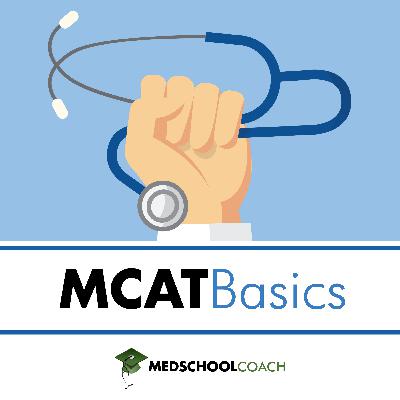
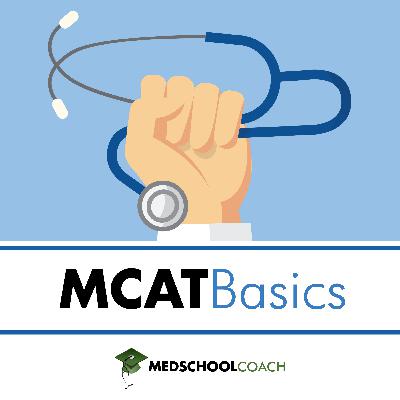

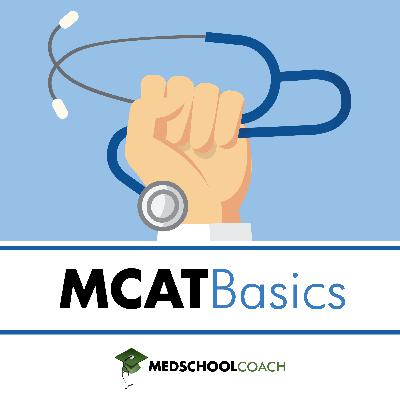
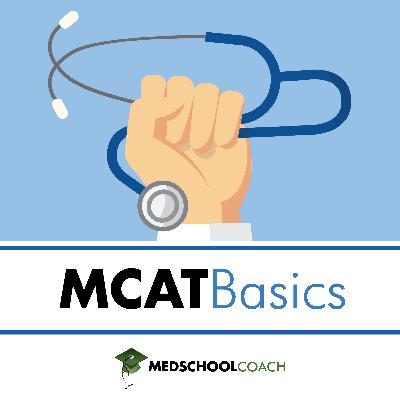
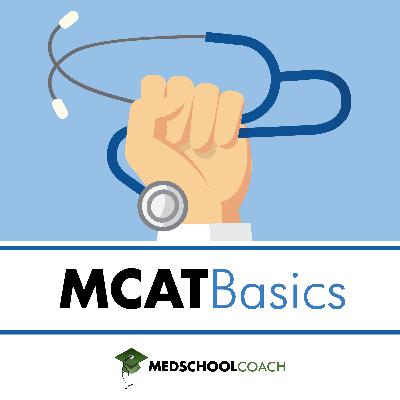

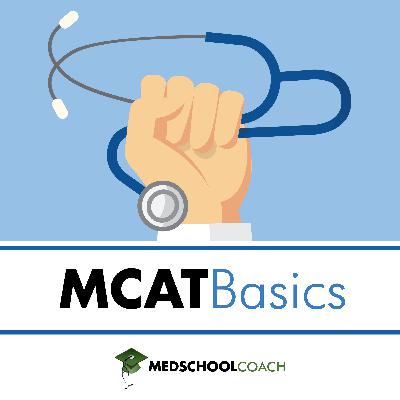
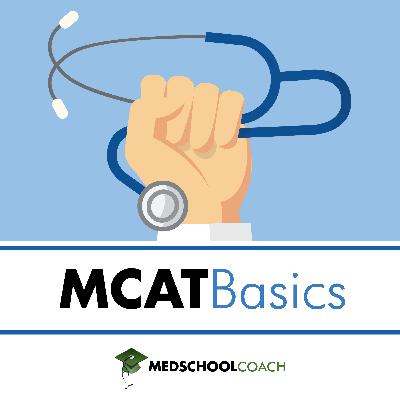


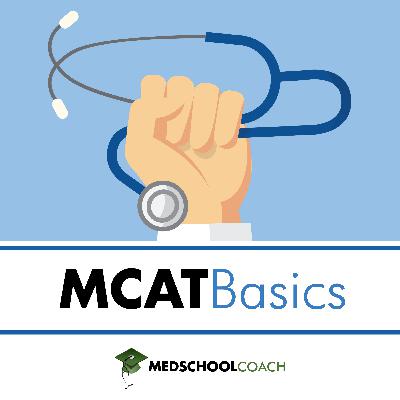



This was a very good episode. Good breakdown and explanation. Give the course name, e.g. biochem I. It was hard to relate the quiz questions to the lecture topic, but I still liked the segment because you explained the answer well. A lot of content for the time. U listened twice. Thanks for respecting our time.